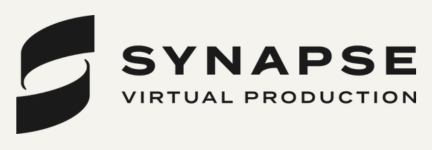
Why Analogue Techniques Are Reclaiming Space in Advertising

In an industry increasingly shaped by algorithms, automation, and synthetic content, a quiet countermovement is gaining traction. From stop-motion to long copy, hand-drawn design to mixed media experiments, a growing number of creatives are reviving traditional, tactile techniques to bring something often missing in machine-made work: a human heartbeat.
This resurgence isn’t about nostalgia, it’s about intent. Whether it's to reclaim collaboration, reintroduce imperfection, or reinforce authenticity in an era of deepfakes and flawless prompts, these ‘forgotten’ crafts are being wielded in powerful new ways.
We asked creatives across the industry to share why analogue is finding fresh relevance and what its resurgence might signal about where truly original advertising is heading.
Marcus Armitage, director at Studio AKA
Using AI can be quite a lonely task, as team numbers become smaller and you plug away at the interface. The one thing I love the most about animation is working with a team and collaborating.
‘In Waves and War’ is a documentary about three US Navy officials and their combined trauma of experiencing war. I was tasked with recreating these experiences, focusing on the haziness of their memories. Instead of using digital techniques or AI, we decided to use charcoal, a medium that is perfect for creating a hazy uncertain image.
The charcoal technique meant that we collaborated with artists and animators all in the same space, and we were trying out and learning things on the fly. It makes the time spent on the project more worthwhile and memorable because at the end of it, we had a by-product of thousands of artwork pieces and not just a singular written prompt.
Simon Helm, head of art at Fold7
Human-made work isn't afraid to look imperfect; it can be visceral and messy, and bare the marks of raw creativity. Embracing imperfection in a world obsessed with flawlessness definitely feels like a strong countermovement today. Humans relate to other humans – not computers.
AI is now so convincing, it's often hard to tell what’s real. That’s where distrust creeps in. When we’re led to believe something is human-made and it turns out to be AI, we feel deceived. That’s risky territory for brands.
Soon we'll all be subconsciously looking for proof that something is real or not, and human imperfections, tactility, nuances of communication and artistic processes will all help us connect to a brand and trust what they say is true.
Ultimately, it still comes down to the one question: what makes the best work? If using handmade techniques will bring the idea to life in the most interesting and original way, then I’m all for it. If it's AI, then I'm all for that too. Just don't go lying to everyone.
Tracey Smith, US head of design & creative fellow at Deloitte Digital
Analogue will always be relevant. I find myself increasingly drawn to creating with more tangible tools like paints, brushes, oil pastels, and charcoal to offset gen AI and digital creation buzz that we all have immersed ourselves in. As the world becomes more tech-forward, we will start to see OG craft emerging in a variety of ways – appearing in mixed media applications and bringing a human, grounded, and tactile nature to the digital landscape.
Zane Radcliffe, executive creative director at McCann Bristol
We’re leading the charge for brands to rediscover the deeply connective power of long copy. It’s a neglected craft, in an era where social media has led agencies into thinking audiences only have the headspace for quick-turnaround, say-it-all in six seconds, bite-size, creative snapshots.
Our recent ‘Wake’ print campaign for Brittany Ferries has been making waves for featuring a graphic of a ship ‘sailing’ across 500 words of insightful and evocative copy, trailing a typographical wake behind it. The approach has been celebrated for being ‘refreshingly old school’ and is a rare example of the crafts of copywriting, art direction and typography marrying together perfectly to create something that has an inescapably human touch. Yes, it took longer to craft, but it lives longer in the mind of those who bob along on its sea of holiday memories.






